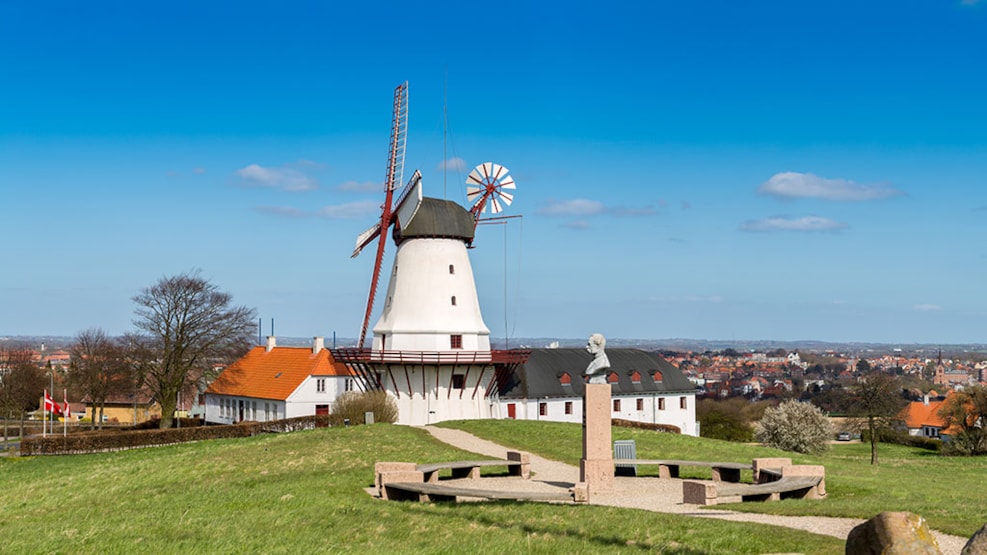
Dybbøl Mill - Denmark's national symbol
Dybbøl Mill - the mill of type gallery-Holland, known as national symbol of Danish bravery
Twice shot into Gravel
Thunderstorm, wars and short circuit has cost the “life” of today´s mill´s predecessors, and so the mill standing on Dybbøl Banke today is actually the fifth mill on this site.
1744 - 1800
The first mill stands here for 56 years before it is struck by lightning during a thunderstorm and burns down.
1800 - 1849
The next mill burns down after being hit under bombardments during the First Schleswig War (1848-50) also known as the Three Year´s War.
1853 - 1864
Due to the war, the rebuilt of the third mill is postponed and after approx. 11 years, the battles are raging around the mill yet again. The Second Schleswig War or the War in 1864 transforms Dybbøl Banke into a battlefield; the mill is bombarded again and burns down.
1864 - 1935
Denmark loses the war in 1864 and Southern Jutland and the Sønderborg-area is occupied by the Prussians and the next mill is built under German rule. During the time of the industrial revolution electricity is introduced and unfortunately a short-circuit leads to a fire, burning the mill down to the ground.
1935 -
The mill as you see it today is an almost faithful copy of the one built in 1864. The current mill was in operation until 1990, after which it was converted into a museum. In the grain magazine there are exhibitions about Dybbøl Mølle's history in the period 1744-2020 and about Dybbøl Mølle as a symbol. In the mill itself you can see the old grinders and the beautiful view from the gallery.
The poem on the granite tablet
On the current mill sits a granite tablet with a poem by Thordur Tomasson, referring to the wars at Dybbøl Banke. The board's many cracks are due to the heat from the fire in 1935.
The poem sounds more or less like this and only rhymes in Danish
Twice shot into Gravel
Raised again as Mill house
Guardian of a Memorial
A megalith in itself, Danish and faithful.
Scout as far as your Eye reaches
Grave by Grave in the Field stands.
Danish men gave their lives
Loyalty still holds the Trenches.
Tear dewed Wreath of Honour
Surround the Dybbøl Name in Glory.
Generations die, but Language binds.
Future grows of expensive Memories.
What makes a mill a national symbol of Danish bravery?
Without the war in 1864 and the battles that took place right outside the city gate, Dybbøl Mill would have been just another windmill - read more about Dybbøl Mill as national symbol